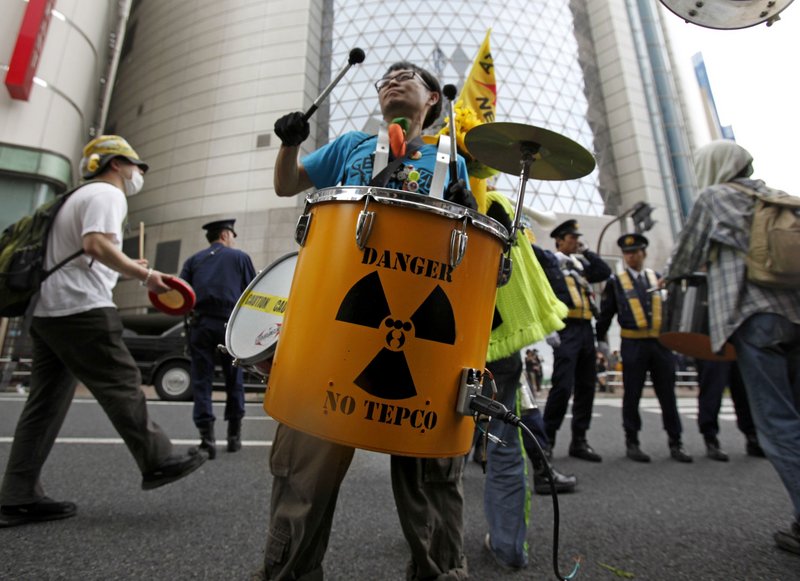TOKYO – Levels of radioactivity have risen sharply in seawater near a tsunami-crippled nuclear plant in northern Japan, signaling the possibility of new leaks at the facility, the government said Saturday.
The announcement came after a magnitude-5.9 earthquake jolted Japan on Saturday morning, hours after the country’s nuclear safety agency ordered plant operators to beef up their quake preparedness systems.
There were no reports of damage and no risk of a tsunami similar to the one that struck the Fukushima Dai-ichi plant March 11 after a magnitude-9.0 earthquake, causing Japan’s worst nuclear plant disaster.
Since the tsunami knocked out the plant’s cooling systems, workers have been spraying massive amounts of water on the overheated reactors. Some of that water, contaminated with radiation, leaked into the Pacific. Plant officials said they plugged that leak on April 5 and radiation levels in the sea dropped.
But the government said Saturday that radioactivity in the seawater has risen again in recent days. The level of radioactive iodine-131 spiked to 6,500 times the legal limit, according to samples taken Friday, up from 1,100 times the limit in samples taken the day before.
Levels of cesium-134 and cesium-137 rose nearly fourfold. The increased levels are still far below those recorded earlier this month before the initial leak was plugged.
The new rise in radioactivity could have been caused by the installation Friday of steel panels intended to contain radiation that may have temporarily stirred up stagnant waste in the area, Hidehiko Nishiyama of the Nuclear and Industrial Safety Agency told reporters. However, the increase in iodine-131, which has a relatively short eight-day half-life, could signal the possibility of a new leak, he said.
Plant workers Saturday began dumping sandbags filled with zeolite, a mineral that absorbs radioactive cesium, into the sea to combat the radiation leaks.
Copy the Story Link
Send questions/comments to the editors.



Success. Please wait for the page to reload. If the page does not reload within 5 seconds, please refresh the page.
Enter your email and password to access comments.
Hi, to comment on stories you must . This profile is in addition to your subscription and website login.
Already have a commenting profile? .
Invalid username/password.
Please check your email to confirm and complete your registration.
Only subscribers are eligible to post comments. Please subscribe or login first for digital access. Here’s why.
Use the form below to reset your password. When you've submitted your account email, we will send an email with a reset code.